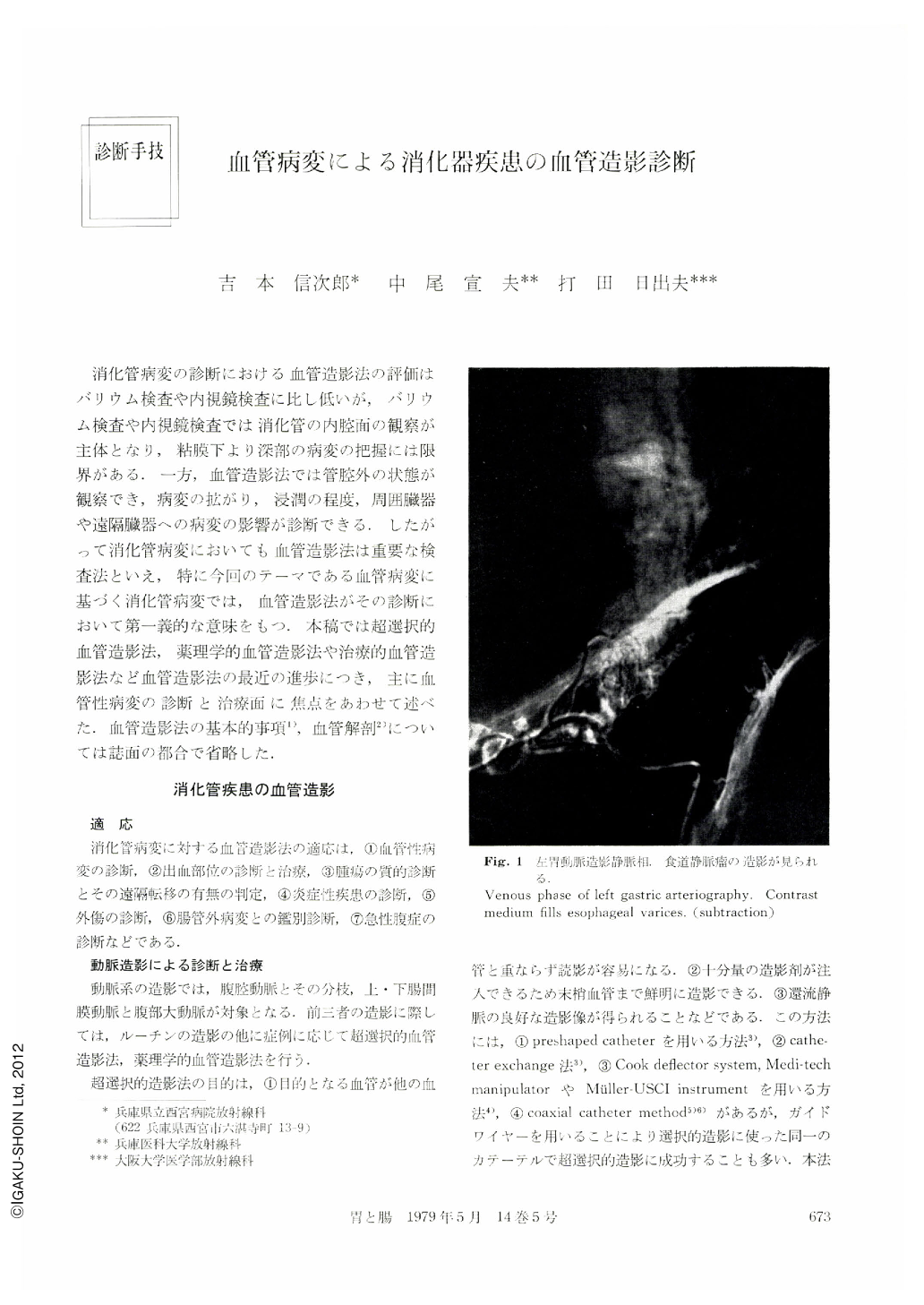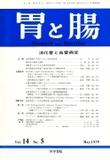Japanese
English
- 有料閲覧
- Abstract 文献概要
- 1ページ目 Look Inside
消化管病変の診断における血管造影法の評価はバリウム検査や内視鏡検査に比し低いが,バリウム検査や内視鏡検査では消化管の内腔面の観察が主体となり,粘膜下より深部の病変の把握には限界がある.一方,血管造影法では管腔外の状態が観察でき,病変の拡がり,浸潤の程度,周囲臓器や遠隔臓器への病変の影響が診断できる.したがって消化管病変においても血管造影法は重要な検査法といえ,特に今回のテーマである血管病変に基づく消化管病変では,血管造影法がその診断において第一義的な意味をもつ.本稿では超選択的血管造影法,薬理学的血管造影法や治療的血管造影法など血管造影法の最近の進歩につき,主に血管性病変の診断と治療面に焦点をあわせて述べた.血管造影法の基本的事項1),血管解剖2)については誌面の都合で省略した.
The importance of angiography in the diagnosis of digestive diseases may be underestimated as compared with that of barium study or endoscopic examination, but the latter two aim mainly at observing the internal lumen surfaces of the digestive tract, thus having a limit to the grasp of changes in further depths. In angiography, on the other hand, changes outside intestinal lumen can be observed, and hence a diagnosis can be made of extension of lesion, extent of invasion and further influence of lesion on surrounding or remote organs. Even in diseases of gastrointestinal tract, especially due to vascular lesions, angiography has univocal significance. In this paper, superselective angiography, pharmacoangiography, therapeutic angiography, direct serial magnification angiography, stereoangiography and endoscopy with the aid of arterial injection of the dye are described for their indications, practices of examination. As for various kinds of vascular diseases, visceral vascular occlusive diseases, aneurysma, periarteritis nodosa, hemangioma, arteriovenous malformation, varices, etc. are described centering on their angiographic findings.

Copyright © 1979, Igaku-Shoin Ltd. All rights reserved.


